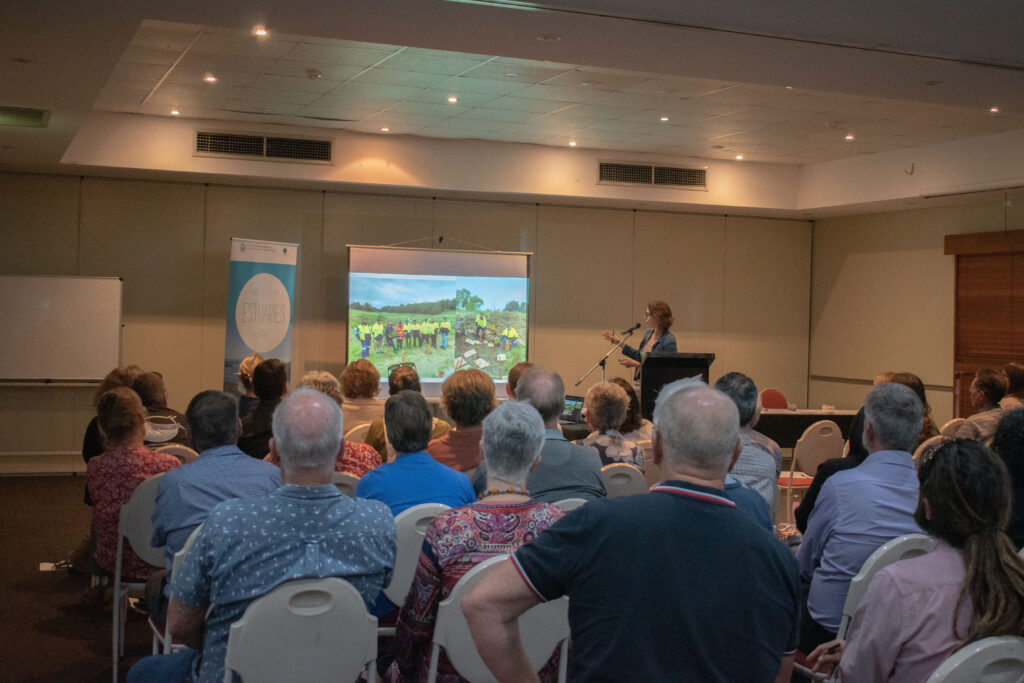More than 260 community members from Mandurah to Albany joined us to learn about estuary water quality and catchment management at a series of community science forums in late 2022.

Our scientists who monitor water quality in catchments and estuaries through Healthy Estuaries WA present an annual update on interesting trends from the data at these events. This year we explored how the above-average rainfall and flows in winter 2021 have affected nutrients and algal growth in our estuaries in 2021 and 2022.
Runoff from rainfall collects nutrients like phosphorus and nitrogen from land throughout the catchment and transports them through streams and rivers to our estuaries. This means that sometimes after high rainfall we can see more algal growth, because algae thrive on these nutrients just like plants in paddocks and gardens do.
Our scientists found that, while the rainfall typically caused high nutrient levels during winter and spring 2021, fortunately in most areas this did not cause higher than usual algal growth.
“High flows into spring paired with low temperatures likely helped prevent blooms forming because the darker water decreases light availability, nutrients may have flowed out to sea more quickly and cooler spring temperatures and flowing water slowed algal growth,” said Dr Jo Browne of the situation in Augusta’s Hardy Inlet.
Dr Elke Reichwaldt, who works in our South Coast estuaries, said: “Although this is great news for 2022, we still need to keep up our work in the catchment to reduce nutrient inputs and protect our estuaries in the face of climate change. Hot and dry spring and summer conditions could fuel algal growth.”
The events also showcased fantastic case studies from farmers who have been working with our partner catchment groups to fence and revegetate waterways on their farms and implement best-practice nutrient management. These farmers are highly motivated by looking after their land and the environment while optimising their productivity.


Special guests also joined us to present on topics relevant to each estuary including fish monitoring, seagrass monitoring, dairy effluent management and oyster reef restoration. Presentations from high school students from Manea College in Bunbury and Albany Senior High School on their citizen science efforts monitoring aquatic fauna were among the highlights!

“Our community members tell us that they treasure their local estuaries for their beauty, the opportunities to connect with nature, observe wildlife, and have fun with their families,” said Healthy Estuaries WA program manager Jennifer Stritzke.
“These events allow us to learn from the community members who live around the estuaries and keep them updated on what our monitoring is telling us about estuary health and the impact of management actions.”
Thank you to all those who came along to the events with us and our catchment group partners. Be sure to sign up to our Healthy Estuaries WA mailing list and follow your local catchment group to hear about future events.
